
Exhibition Louis Kahn – The Power of Architecture
23. 2. – 11. 8. 2013, Vitra Design Museum in Weil am Rhein
Louis Kahn (1901-1974) was one of the most significant architects of the twentieth century. Based on complex spatial concepts and choreographic work with light, he created buildings that are characterized by archaic beauty and strong universal symbolism. His most important works include the Salk Institute in La Jolla, California (1959-65), the Kimbell Art Museum in Fort Worth, Texas (1966-72), and the National Assembly Building in Dhaka, Bangladesh (1962-83). The exhibition Louis Kahn - The Power of Architecture at the Vitra Design Museum is the first major retrospective of Kahn's work in the last twenty years.
The exhibition presents an unprecedentedly diverse selection of architectural models, original sketches, photographs, and films, and meticulously documents all of Kahn's significant projects from early urban concepts and family homes to late monumental works such as the Roosevelt Memorial in New York (1973-74), completed after the architect's death in October 2012. The showcase of Kahn's architectural work is complemented by a selection of watercolors, pastels, and charcoal drawings created during Kahn's travels, proving that their author was a skilled artist and draftsman. The highlight of the exhibition is a four-meter tall model of the impressive City Tower designed for Philadelphia (1952-57) along with previously unpublished footage shot by Kahn's son Nathaniel, director of the film My Architect: Louis Kahn. The current significance of Kahn's work, which the exhibition re-discovers and presents to a wide audience, is evidenced by interviews with architects Frank Gehry, Renzo Piano, Peter Zumthor, and Sou Fujimoto.
The exhibition begins with an extensive biographical section composed of films, personal documents, and sketches through which visitors can get acquainted with Kahn's life and work. Kahn, the son of Jewish immigrants from Estonia, grew up in Philadelphia. From a young age, he showed an interest in art. He also studied at one of the best American architecture schools in Philadelphia. In the late 1920s, he embarked on his first Grand Tour to the Netherlands, Germany, Italy, and Greece. He returned to Europe in 1950 as a visiting professor at the American Academy in Rome and also visited Egypt. He soon gained recognition as a beloved professor at Yale University and the University of Pennsylvania, but he only broke through as an architect on the international stage when he was nearly 60 years old. In the 1940s and 1950s, he focused mainly on residential building designs and urbanism, but from 1960, he achieved fame primarily as an architect of public buildings - museums, laboratories, religious buildings, universities, and the National Assembly Building. His complex private life was first revealed in the film My Architect: Louis Kahn. Kahn had several families, maintaining a long-term relationship with architect Anne Tyng and landscape architect Harriet Pattison alongside his wife Esther; both had a significant influence on his work.
After the biographical introduction, six thematic areas represent the evolution of Kahn's work. The leitmotif is Kahn's search for archetypes not only in architecture and art but also in natural sciences and even human behavior and society.
The first part of the exhibition, titled The City, closely relates to Kahn's biography as it deals with the architect's relationship with Philadelphia - upon arriving in the United States, he began to consider it his home. Philadelphia also served as a laboratory where he formulated his urban and architectural principles. In the 1940s, he became a pioneer of the urban renewal movement, designing the reconstruction of entire neighborhoods with a significant degree of social engagement and pragmatism. In the 1950s and 1960s, he publicly advocated increasingly radical visionary proposals for the reconstruction of downtown Philadelphia, including a major reorganization of urban transport and the conception of the city center as an extensive pedestrian zone surrounded by massive parking towers and plans for the upcoming World Expo in 1976.
The second part of the exhibition - Science - shows that Kahn was concerned with structural laws in nature and wanted to use them to lay the foundation for the renewal of architecture. This theme began to occupy him in the 1950s. At that time, he taught at Yale University as well as in Philadelphia. He was inspired by Anne Tyng, who was then working in his studio, and French engineer Robert Le Ricolais. He created a new architectural vocabulary of geometric structures corresponding to forms that are identified in microbiology as the basic building blocks of life. This work brought him closer to another architect active at Yale University - Richard Buckminster Fuller. Kahn’s structural thinking celebrated success after the completion of the Yale University Art Gallery in New Haven (1951-53) and the Richards Medical Laboratories in Philadelphia (1957-65). Together with another Estonian immigrant, engineer August E. Komendant, he developed entirely new methods for concrete construction. His "structural" approach culminated in the bold project of a 180-meter-high office tower for the city hall in Philadelphia (1952-57). The spatial frame structure of the City Tower preceded metabolists by many years, as it outlined a form of high-rise buildings that could only be realized half a century later.
In the third part - The Landscape - visitors learn that Kahn did not consider nature merely as a source of inspiration but also as an increasingly important component of the buildings he designed. This can be illustrated by gardens conceived as extensions of architecture, such as the Kimbell Art Museum (1966-72) designed in collaboration with Harriet Pattison, and the Adele Levy Memorial Playground in New York (1961-66, unbuilt) designed in collaboration with Isamu Noguchi as a "playscape" with sculpturally shaped surfaces. Kahn also attributed great importance to traditional construction methods and ways of influencing the indoor climate of buildings - he took local climatic conditions into account, such as the position of the sun and wind directions. These aspects he then emphasized and stylized through sophisticated choreography of incoming daylight.
The creation of Kahn's residential projects was driven by a desire to create a stronger bond between architecture and the surrounding environment. Kahn considered the House to be an archetype and a starting point for understanding architecture and society. Initially, he was interested in the ideas of functionalism - as evidenced in the modular prefabricated Parasol House project (1944, unbuilt) - but from the mid-1940s, his residential projects were increasingly inspired by local patterns such as the houses of early American settlers and Shaker furniture. Around the same time, Kahn realized that houses and cities have similar arrangements; he compared bedrooms to the residential parts of the city, kitchens to industrial zones, and corridors to streets. The Esherick House (1959-62), Fisher House (1960-67), and Korman House (1971-73) feature many remarkable elements, such as intentional light guidance, rhythmic facade segmentation, and a refined combination of natural stone, wood, and glass requiring extremely precise craftsmanship.
Kahn's growing fame was significantly aided by projects that were closely linked to the timeless foundations of traditional construction while being notably innovative and progressive in terms of technology and construction. Kahn's ideal of Eternal Presence emerged from his intense interest in the history of architecture and archetypal buildings. This can be well observed in his sketches from travels through Italy, Greece, and Egypt. He was particularly fascinated by ruins - architectural ruins without stucco and ornamentation reveal their true structure, gradually decaying and disappearing into the landscape. This motif is reflected, for example, in the simplicity and basic materials of the Churva Synagogue in Jerusalem (1967-74, unbuilt). Kahn's interest in monumental architecture is also evident in his designs for monuments and memorials. Examples include the unbuilt Memorial to the Six Million Slain Jews (New York, 1966-72) or the Franklin D. Roosevelt Memorial made of massive granite blocks on Roosevelt Island in the East River in New York, which was completed after Kahn's death in 2012.
The final part of the exhibition - its climax - is a section titled Social Relationships. Kahn placed great importance on the social significance of architecture. The exhibition shows how he derived new forms of public buildings from this principle. Kahn was perhaps the only architect to design a church (the Unitarian Church in Rochester, 1959-62), several synagogues, and a Muslim prayer hall. All of these buildings testify to the fact that in his spatial concepts, his social and political views are always reflected, transcending mere functional requirements. A good example is the Indian Institute of Management in Ahmedabad (1962-74) or the National Assembly Building in Dhaka (1962-82). Both of these buildings can be considered typical examples of Kahn's architectural work. Hundreds of local workers participated in their construction, local building methods were employed, and both became architectural icons for the young states for which they were built within a relatively short time. Their public and semi-public spaces greatly facilitate human interaction and communication and also serve as a stage for the everyday lives of visitors. They blend local building traditions with modern architectural style and are a typical example of architecture that transcends state and cultural boundaries and rediscover elements that elevate the art of building.
Thus, the seven parts of the exhibition as a whole reveal a new view of the work of Louis Kahn, which resists common modernist or postmodernist classification. Kahn's uniqueness lies in the synthesis of significant conceptual traditions of modern architecture - from the Ecole des Beaux Arts and 19th-century structural rationalism to the Arts and Crafts movement and Bauhaus modernism - and ancient traditional construction methods. Kahn sought inspiration in metabolism and brutalism as well and wisely promoted building aspects that are increasingly playing a significant role today - such as a return to local resources and "soft" factors like air, light, and water. He regarded himself as a continuer of a millennia-old tradition that views architecture not only as a means of satisfying utilitarian needs but also as a stimulus for creative contemplation and reflection on nature, history, and human society.
Louis Kahn died on March 17, 1974, at New York's Pennsylvania Station while returning home to Philadelphia from India.
The exhibition was prepared in collaboration with the Vitra Design Museum, the architectural archive of the University of Pennsylvania in Philadelphia, and NAI, part of the New Institute in Rotterdam. The Vitra Design Museum thanks its global sponsor Swarovski for their generous support of the cultural program, which significantly contributed to the rediscovery of this influential architect's work.
Curators: Stanislaus von Moos, art historian
Jochen Eisenbrand, Vitra Design Museum
Opening: Friday, February 22, 2013, at 7:00 PM
Exhibition runs until: August 11, 2013
Opening hours: Daily 10:00 AM - 6:00 PM
Admission: 9 EUR, reduced admission 7 EUR, free for children under 12
Guided tours: Every Saturday, Sunday, and public holiday at 11:00 AM (in German)
Exhibits: Approx. 60 architectural models, 70 original sketches, 20 travel sketches, photographs, and a dozen historical and newly filmed movies.
The exhibition presents an unprecedentedly diverse selection of architectural models, original sketches, photographs, and films, and meticulously documents all of Kahn's significant projects from early urban concepts and family homes to late monumental works such as the Roosevelt Memorial in New York (1973-74), completed after the architect's death in October 2012. The showcase of Kahn's architectural work is complemented by a selection of watercolors, pastels, and charcoal drawings created during Kahn's travels, proving that their author was a skilled artist and draftsman. The highlight of the exhibition is a four-meter tall model of the impressive City Tower designed for Philadelphia (1952-57) along with previously unpublished footage shot by Kahn's son Nathaniel, director of the film My Architect: Louis Kahn. The current significance of Kahn's work, which the exhibition re-discovers and presents to a wide audience, is evidenced by interviews with architects Frank Gehry, Renzo Piano, Peter Zumthor, and Sou Fujimoto.
The exhibition begins with an extensive biographical section composed of films, personal documents, and sketches through which visitors can get acquainted with Kahn's life and work. Kahn, the son of Jewish immigrants from Estonia, grew up in Philadelphia. From a young age, he showed an interest in art. He also studied at one of the best American architecture schools in Philadelphia. In the late 1920s, he embarked on his first Grand Tour to the Netherlands, Germany, Italy, and Greece. He returned to Europe in 1950 as a visiting professor at the American Academy in Rome and also visited Egypt. He soon gained recognition as a beloved professor at Yale University and the University of Pennsylvania, but he only broke through as an architect on the international stage when he was nearly 60 years old. In the 1940s and 1950s, he focused mainly on residential building designs and urbanism, but from 1960, he achieved fame primarily as an architect of public buildings - museums, laboratories, religious buildings, universities, and the National Assembly Building. His complex private life was first revealed in the film My Architect: Louis Kahn. Kahn had several families, maintaining a long-term relationship with architect Anne Tyng and landscape architect Harriet Pattison alongside his wife Esther; both had a significant influence on his work.
After the biographical introduction, six thematic areas represent the evolution of Kahn's work. The leitmotif is Kahn's search for archetypes not only in architecture and art but also in natural sciences and even human behavior and society.
The first part of the exhibition, titled The City, closely relates to Kahn's biography as it deals with the architect's relationship with Philadelphia - upon arriving in the United States, he began to consider it his home. Philadelphia also served as a laboratory where he formulated his urban and architectural principles. In the 1940s, he became a pioneer of the urban renewal movement, designing the reconstruction of entire neighborhoods with a significant degree of social engagement and pragmatism. In the 1950s and 1960s, he publicly advocated increasingly radical visionary proposals for the reconstruction of downtown Philadelphia, including a major reorganization of urban transport and the conception of the city center as an extensive pedestrian zone surrounded by massive parking towers and plans for the upcoming World Expo in 1976.
The second part of the exhibition - Science - shows that Kahn was concerned with structural laws in nature and wanted to use them to lay the foundation for the renewal of architecture. This theme began to occupy him in the 1950s. At that time, he taught at Yale University as well as in Philadelphia. He was inspired by Anne Tyng, who was then working in his studio, and French engineer Robert Le Ricolais. He created a new architectural vocabulary of geometric structures corresponding to forms that are identified in microbiology as the basic building blocks of life. This work brought him closer to another architect active at Yale University - Richard Buckminster Fuller. Kahn’s structural thinking celebrated success after the completion of the Yale University Art Gallery in New Haven (1951-53) and the Richards Medical Laboratories in Philadelphia (1957-65). Together with another Estonian immigrant, engineer August E. Komendant, he developed entirely new methods for concrete construction. His "structural" approach culminated in the bold project of a 180-meter-high office tower for the city hall in Philadelphia (1952-57). The spatial frame structure of the City Tower preceded metabolists by many years, as it outlined a form of high-rise buildings that could only be realized half a century later.
In the third part - The Landscape - visitors learn that Kahn did not consider nature merely as a source of inspiration but also as an increasingly important component of the buildings he designed. This can be illustrated by gardens conceived as extensions of architecture, such as the Kimbell Art Museum (1966-72) designed in collaboration with Harriet Pattison, and the Adele Levy Memorial Playground in New York (1961-66, unbuilt) designed in collaboration with Isamu Noguchi as a "playscape" with sculpturally shaped surfaces. Kahn also attributed great importance to traditional construction methods and ways of influencing the indoor climate of buildings - he took local climatic conditions into account, such as the position of the sun and wind directions. These aspects he then emphasized and stylized through sophisticated choreography of incoming daylight.
The creation of Kahn's residential projects was driven by a desire to create a stronger bond between architecture and the surrounding environment. Kahn considered the House to be an archetype and a starting point for understanding architecture and society. Initially, he was interested in the ideas of functionalism - as evidenced in the modular prefabricated Parasol House project (1944, unbuilt) - but from the mid-1940s, his residential projects were increasingly inspired by local patterns such as the houses of early American settlers and Shaker furniture. Around the same time, Kahn realized that houses and cities have similar arrangements; he compared bedrooms to the residential parts of the city, kitchens to industrial zones, and corridors to streets. The Esherick House (1959-62), Fisher House (1960-67), and Korman House (1971-73) feature many remarkable elements, such as intentional light guidance, rhythmic facade segmentation, and a refined combination of natural stone, wood, and glass requiring extremely precise craftsmanship.
Kahn's growing fame was significantly aided by projects that were closely linked to the timeless foundations of traditional construction while being notably innovative and progressive in terms of technology and construction. Kahn's ideal of Eternal Presence emerged from his intense interest in the history of architecture and archetypal buildings. This can be well observed in his sketches from travels through Italy, Greece, and Egypt. He was particularly fascinated by ruins - architectural ruins without stucco and ornamentation reveal their true structure, gradually decaying and disappearing into the landscape. This motif is reflected, for example, in the simplicity and basic materials of the Churva Synagogue in Jerusalem (1967-74, unbuilt). Kahn's interest in monumental architecture is also evident in his designs for monuments and memorials. Examples include the unbuilt Memorial to the Six Million Slain Jews (New York, 1966-72) or the Franklin D. Roosevelt Memorial made of massive granite blocks on Roosevelt Island in the East River in New York, which was completed after Kahn's death in 2012.
The final part of the exhibition - its climax - is a section titled Social Relationships. Kahn placed great importance on the social significance of architecture. The exhibition shows how he derived new forms of public buildings from this principle. Kahn was perhaps the only architect to design a church (the Unitarian Church in Rochester, 1959-62), several synagogues, and a Muslim prayer hall. All of these buildings testify to the fact that in his spatial concepts, his social and political views are always reflected, transcending mere functional requirements. A good example is the Indian Institute of Management in Ahmedabad (1962-74) or the National Assembly Building in Dhaka (1962-82). Both of these buildings can be considered typical examples of Kahn's architectural work. Hundreds of local workers participated in their construction, local building methods were employed, and both became architectural icons for the young states for which they were built within a relatively short time. Their public and semi-public spaces greatly facilitate human interaction and communication and also serve as a stage for the everyday lives of visitors. They blend local building traditions with modern architectural style and are a typical example of architecture that transcends state and cultural boundaries and rediscover elements that elevate the art of building.
Thus, the seven parts of the exhibition as a whole reveal a new view of the work of Louis Kahn, which resists common modernist or postmodernist classification. Kahn's uniqueness lies in the synthesis of significant conceptual traditions of modern architecture - from the Ecole des Beaux Arts and 19th-century structural rationalism to the Arts and Crafts movement and Bauhaus modernism - and ancient traditional construction methods. Kahn sought inspiration in metabolism and brutalism as well and wisely promoted building aspects that are increasingly playing a significant role today - such as a return to local resources and "soft" factors like air, light, and water. He regarded himself as a continuer of a millennia-old tradition that views architecture not only as a means of satisfying utilitarian needs but also as a stimulus for creative contemplation and reflection on nature, history, and human society.
Louis Kahn died on March 17, 1974, at New York's Pennsylvania Station while returning home to Philadelphia from India.
The exhibition was prepared in collaboration with the Vitra Design Museum, the architectural archive of the University of Pennsylvania in Philadelphia, and NAI, part of the New Institute in Rotterdam. The Vitra Design Museum thanks its global sponsor Swarovski for their generous support of the cultural program, which significantly contributed to the rediscovery of this influential architect's work.
Louis Kahn - The Power of Architecture
An exhibition at the Vitra Design Museum prepared in collaboration with the Netherlands Architecture Institute in Rotterdam and the architectural archive of the University of Pennsylvania in Philadelphia.Curators: Stanislaus von Moos, art historian
Jochen Eisenbrand, Vitra Design Museum
Opening: Friday, February 22, 2013, at 7:00 PM
Exhibition runs until: August 11, 2013
Opening hours: Daily 10:00 AM - 6:00 PM
Admission: 9 EUR, reduced admission 7 EUR, free for children under 12
Guided tours: Every Saturday, Sunday, and public holiday at 11:00 AM (in German)
Exhibits: Approx. 60 architectural models, 70 original sketches, 20 travel sketches, photographs, and a dozen historical and newly filmed movies.
The English translation is powered by AI tool. Switch to Czech to view the original text source.
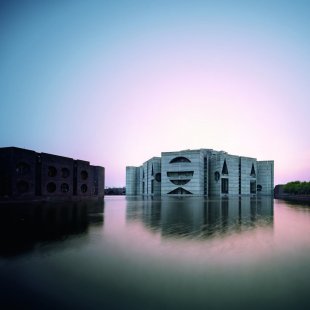

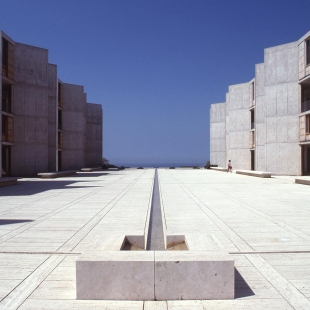
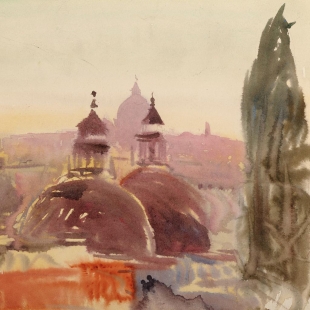
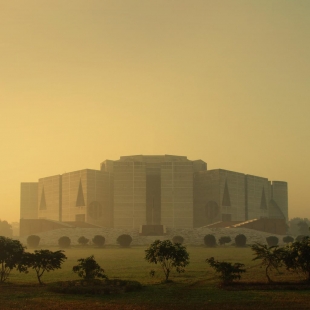
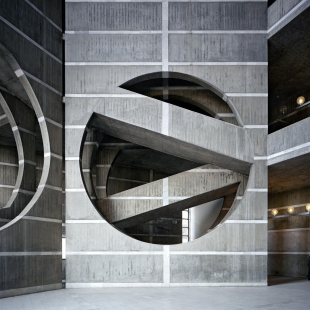
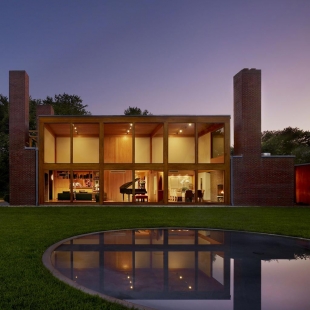
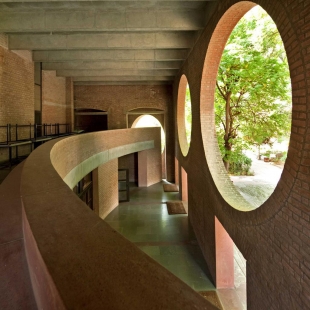
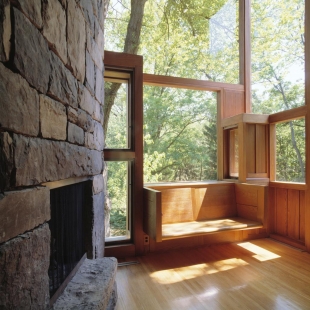
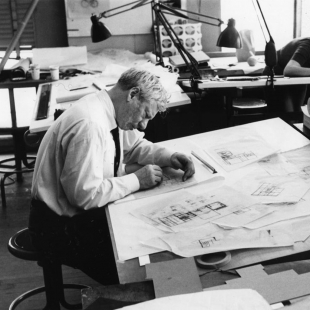
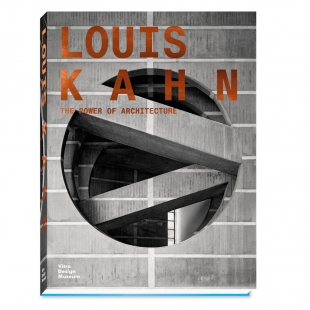
0 comments
add comment











